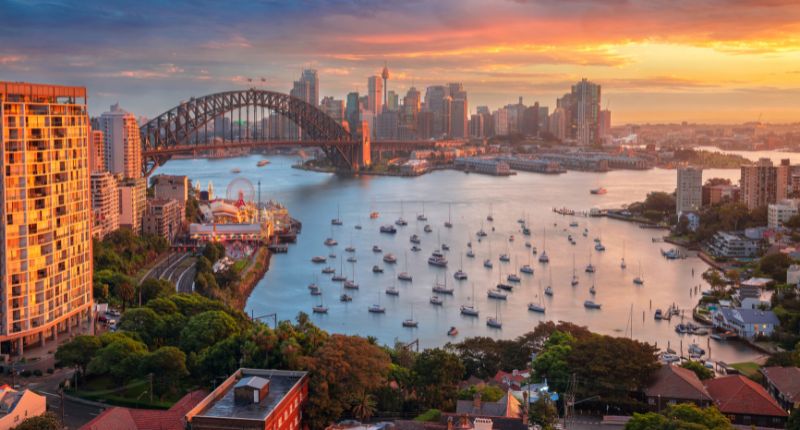
- High housing costs drive tens of thousands of young families out of Sydney.
- Sydney's housing crisis prompts urgent need for more housing density in inner suburbs.
- Increased housing density in prime areas could lower prices and rents, benefiting low-income earners.
The astronomical price of homes has been forcing tens of thousands of young families out of Sydney into the regions and other capitals, reports a new paper released by the NSW Productivity Commission.
Young people are fleeing high prices
The research found that between 2016 and 2021, twice the number of individuals aged 30 to 40 departed Sydney than it acquired. Specifically, 35,000 arrived, but 70,000 left.
“Many young families are leaving Sydney because they can’t afford to buy a home. Or they can only afford one in the outer suburbs with a long commute,” said Productivity Commissioner, Peter Achterstraat AM.
“Sydney is losing its 30–40-year-olds; if we don’t act, we could become known as the city with no grandchildren,” he said.
Achterstraat noted that the study underscored the urgency for more housing density to improve Sydney’s affordability, as it risked losing more talent.
He said that developing the inner-Sydney suburbs, rather than only the city’s fringes, would improve productivity and wages. It would also reduce carbon emissions and conserve land and green spaces.
The case for increased housing density
When executed correctly, housing density can help solve inequities caused by the present housing crisis.
“High housing costs work like a regressive tax, with the burden falling disproportionately on low-income earners.
“Sydney needs hundreds of thousands of new homes over the next two decades. Building more in the places people want to live is a key piece to solving the housing jigsaw puzzle.”
Workers in larger cities earn more on average

“45,000 extra dwellings could have been built between 2017 and 2022, with no extra land, by allowing higher buildings. This could have seen prices and rents 5.5% lower—$35 a week for the median apartment or a saving of $1,800 a year for renters.”
The paper pointed to how large, compact cities tended to house more productive workers and businesses. Much of this stemmed from the improved learning opportunities available there.
Densely populated cities also have many other advantages, such as better access to good schools, quality open space, and goods and services. Building more homes in areas with top schools would bring prices down and place them within reach of disadvantaged families.
“New apartments and townhouses in inner suburbs will let young families live near their parents and their children’s grandparents. The social benefits of abundant well-located homes are major,” Achterstraat said.
The paper also stressed that homes must be built in areas that can adapt to climate change. For instance, homes built near the coast can mitigate the effects of extreme heat.
“We know from overseas that density done well provides benefits for households, communities, and the economy,”
Peter Achterstraat, Productivity Commissioner
“I’m confident we can make density work for us.
“In the last year, we have seen a mature and reasoned discussion from all sectors of the community.
“The key to progress from here is to listen to the opponents to change but also give due weight to the benefits of density and the views of the broader community.”
Housing over heritage
Achterstraat added that heritage restrictions on homes near the CBD needed to be re-examined, particularly their effect on sustaining high home prices.
For instance, he highlighted the abundance of Heritage Conservation Areas (HCAs) restricting new builds, with over half of the residential land in prime suburbs, including North Sydney, Newtown, Edgecliff, and Redfern, comprising HCAs.
This diminished the usable land for new residential areas adjacent to the city, train stations, and close to jobs.
“We can preserve the gems of Sydney’s heritage without inadvertently freezing young people out,” Achterstraat said.




